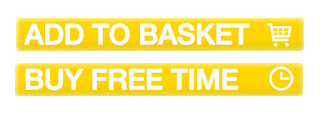As this is our last blog post of the year we thought a stocking filler wish list would be a great way to get out of having to write something of substance!
So in no particular order, here's bunch of cost effective and cool stuff that will give you the perfect excuse to slip away into your studio whilst the relatives argue, because as Einstein's theory of relativity states "time goes more slowly when you're with your relatives".
DIYRE colour palette and modules:
Occasionally a product comes along that makes you wonder why nobody thought of it before. A 500 series host "palette" can be loaded with your choice of 3 analogue saturation and distortion circuit boards (so called "colours"), each of which can be added to the signal path individually. And there are kit versions. And it's very cost effective .. http://www.diyrecordingequipment.com/collections/colour
Orchid Electronics re-amping box:
A complete no-brainer, great product at a great price, and John at Orchid is a gentleman .. http://www.orchid-electronics.co.uk/Amp_Interface.htm
Stage Electrics GPO patch cords:
If you own a type B GPO patchbay you know the expense of buying or making patch cords. Stage Electrics have the answer. How do they produce these so cheaply!? Brilliant .. http://www.stage-electrics.co.uk/shop/sales/extension-cables/audio/cables---screened---gpo-jack-type-'b'
Yamaha Rev500:
The reverb effect processor that Yamaha put in their O1 and O2 series mixers are selling for a pittance on eBay. Absolutely the greatest reverb editing interface ever.
Electro Harmonix Soul Food overdrive pedal:
Ridiculously cheap and ridiculously grungy! .. http://www.ehx.com/products/soul-food
RPGT Photography softbox lighting kit:
OK, so they're cheap and won't stand up to professional or outdoor use, but for £60 you get 2 lights and stands that work brilliantly for lighting your YouTube video productions .. http://www.amazon.co.uk/gp/product/B00NGCXJ2A?psc=1&redirect=true&ref_=oh_aui_detailpage_o06_s00
e-Instruments Session Keys Electric R Rhodes piano instrument plug in:
Our current favourite Rhodes at a discounted price .. http://www.e-instruments.com/instruments/pianos/session-keys-electric-r/
Are We Still Rolling by Phill Brown:
An account of a life at the recording console, Phill's book is an amazing journey through the history of recording and "indulgence". What we can't work out is how he remembered it all! .. http://www.phillbrown.net
Bumblebee RM5 ribbon mic kit:
Arthur Fisher's excellent and cost effective ribbon mic. It's a kit, but even a 5 year olds could assemble it. Take the plunge .. http://www.bumblebeepro.com/products.php?disp=3503
And finally .. https://www.youtube.com/watch?v=JUU8vjSTpP8
Have a great Christmas.
FairFax



















































